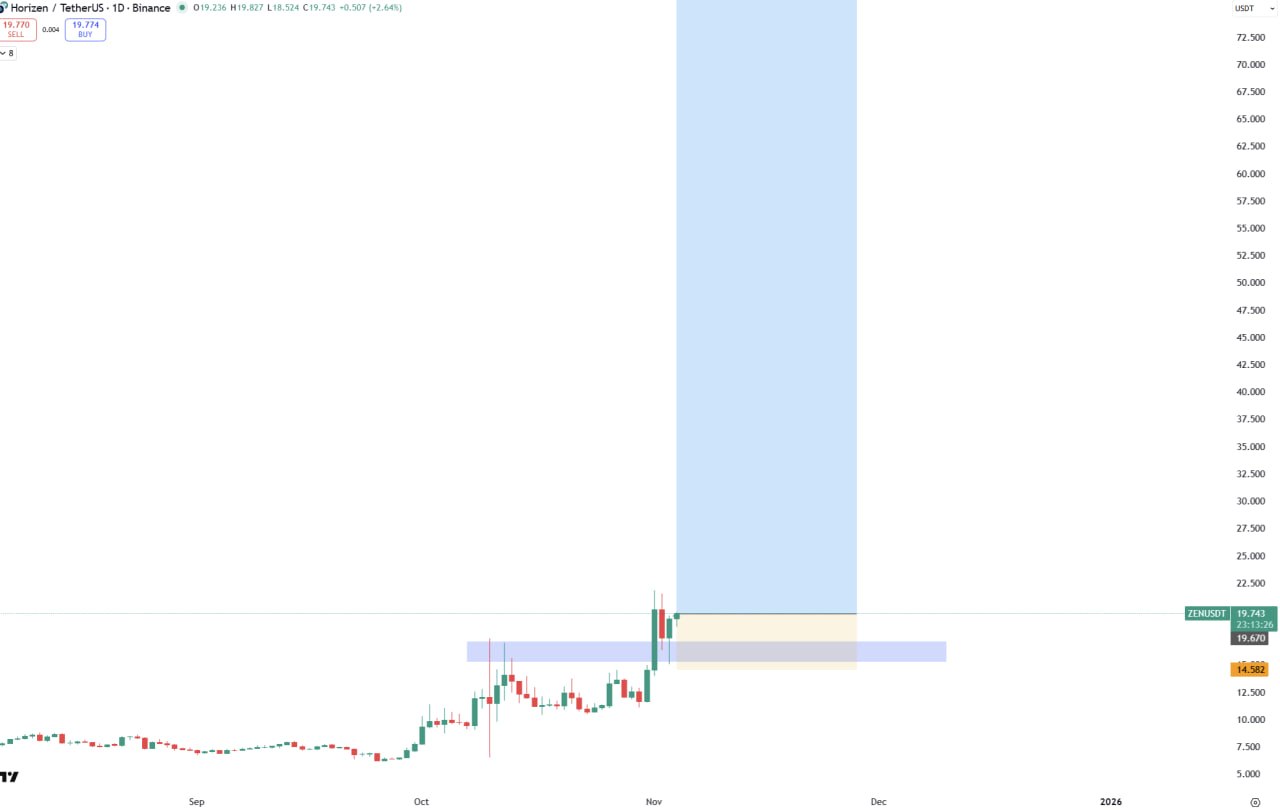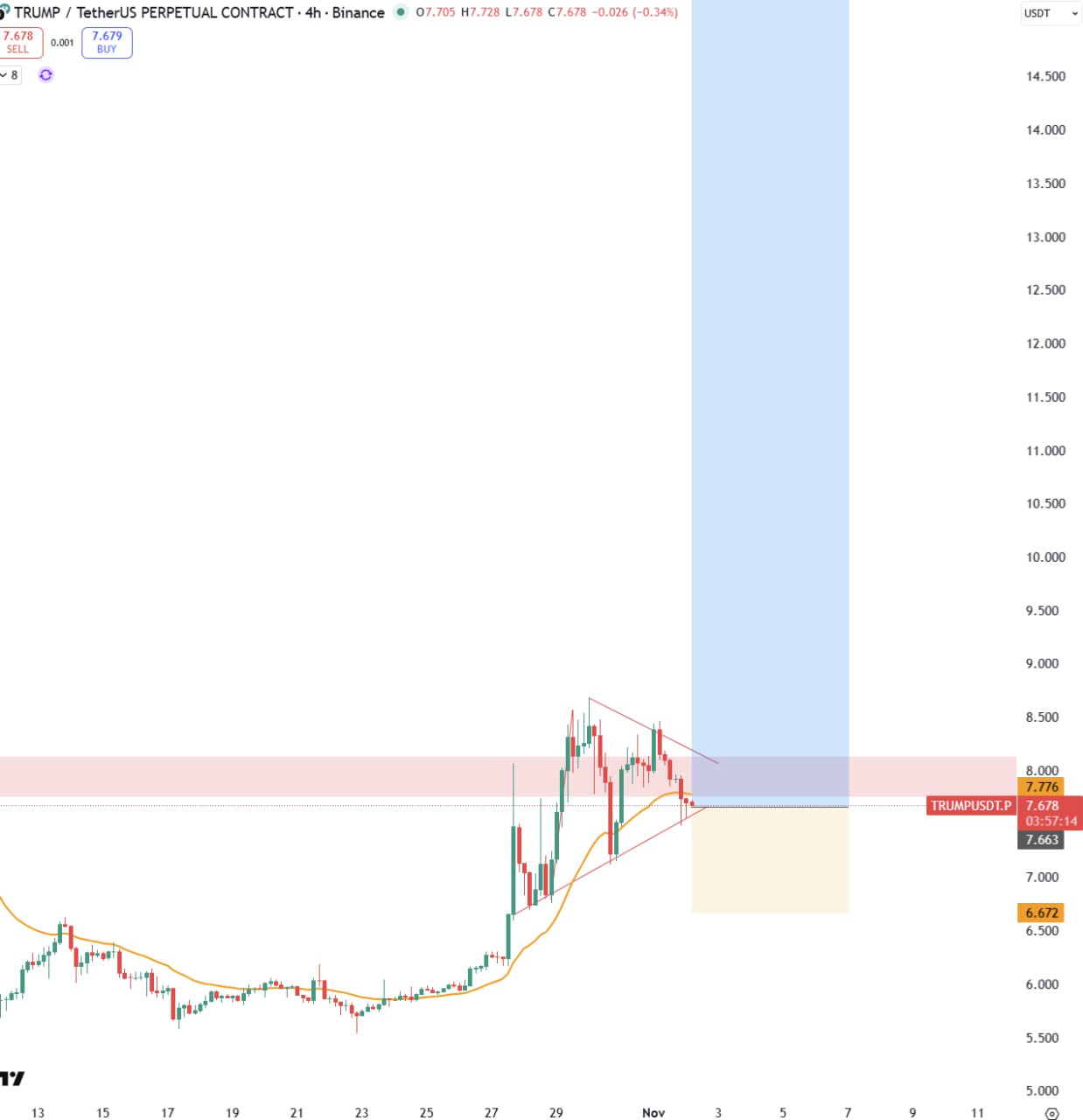ZK/USDT.P — Long
2025-11-03 01:15
Long ZK near 0.05079 with take-profits at 0.055, 0.0575, 0.062 and hard invalidation at 0.03145.

If the TradingView symbol is unavailable, use the annotated image as reference for target zones & invalidation.
ZK/USDT.P Long Trade Signal — November 3, 2025
This plan proposes a long in ZK around 0.05079, scaling out at 0.055, 0.0575, and 0.062, defended by a hard stop at 0.03145. The instrument is a small/mid-cap proxy for the zero-knowledge narrative: liquidity can be uneven, breakouts often overshoot, and pullbacks are abrupt. Accordingly, the execution emphasizes patience at the base and fast derisking once the first resistance is tagged.
Market Context
Zero-knowledge (ZK) branding compresses a complex technology stack into a simple story that markets can trade. Tokens carrying that banner tend to behave like options on attention: weeks of quiet book-building followed by fast expansions when catalysts (upgrades, integrations, or influential endorsements) collide with thin offers. Recently, flows across altcoins have been selective rather than broad; capital rotates in bursts, favoring names with clear headlines and reasonable depth. ZK sits in that lane. The backdrop in majors (BTC, ETH) remains two-sided, which increases the value of level-to-level tactics over conviction-only swings.
Microstructure matters. During EU and US sessions, spreads narrow and resting liquidity improves; in off-hours, books can gap. Funding often flips positive quickly during pops, inviting squeezes both ways. Because of that, the plan chooses a conservative first target to reduce exposure early, shifting the trade from vulnerable to resilient within the first leg.
Technical Analysis
Structure: ZK carved a bracket between ~0.043 and ~0.051 before lifting through the range high and accepting in the 0.050–0.052 pocket. Retests into 0.049–0.050 have shown absorption—multiple lower wicks reclaimed on 1H closes—suggesting inventory moved into sturdier hands. The immediate trouble area is 0.055, which aligns with a prior breakdown shelf and local value area high. A clean push and acceptance above that level opens space to 0.0575, with a stretch objective at 0.062 where offer clusters are historically thicker.
- Trend: 1H/4H higher-low sequence after prolonged compression; daily trend attempting to inflect up.
- Momentum: Best readings occur after volatility contraction; a squeeze through 0.054 with rising participation often precedes quick tags of 0.055–0.0575.
- Volume: Healthy impulses expand volume; consolidations that bleed volume are constructive rather than bearish.
- Liquidity: Adequate during liquid sessions; air pockets appear around round numbers and recent wick highs.
Key Levels & Plan
- Entry: 0.05079 (tolerance 0.0502–0.0511 for limit fills)
- Targets: 0.055 → 0.0575 → 0.062
- Stoploss: 0.03145 (beneath base failure; if tagged, thesis invalid)
- Support: 0.0496–0.0500 (retest shelf), 0.047 (secondary), 0.043 (base low)
- Resistance: 0.055 (local shelf), 0.057–0.058 (supply pocket), 0.061–0.063 (round-number cluster)
Execution Details
- Wait for a 1H close back above ~0.0503 after any dip; avoid chasing vertical candles into 0.055 on first touch.
- Take the first partial at 0.055 to derisk; if 0.055 converts to support on closes, lift the stop beneath the most recent 1H higher low.
- Scale more at 0.0575; retain a modest runner for 0.062 only if breadth improves and funding remains balanced.
- If repeated failures occur at 0.055 with negative cumulative delta and rising open interest, harvest faster and stand aside for a rebuild.
Risk Management
Small/mid-cap perps can move faster than your reflexes. Cap risk per trade (≤1R of daily budget) and assume slippage is possible. Use OCO brackets so actions execute even during spikes. After TP1, you’re managing house money: advance stops under structure rather than anchoring to breakeven, which is often the exact liquidity sweep zone.
- No averaging down below invalidation—0.03145 is final.
- Keep leverage modest so liquidation sits far below the hard stop.
- Use limit orders near levels; market orders in air pockets degrade expectancy.
- Set a daily drawdown cap (e.g., −2R) to protect psychological capital.
Educational content only. Not financial advice. Perpetual futures are risky and may gap beyond stops. You are responsible for sizing, leverage, and execution.








